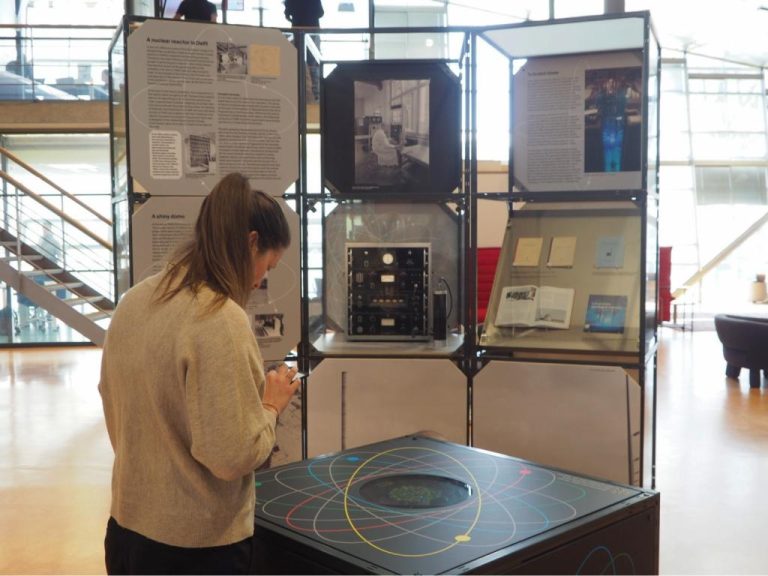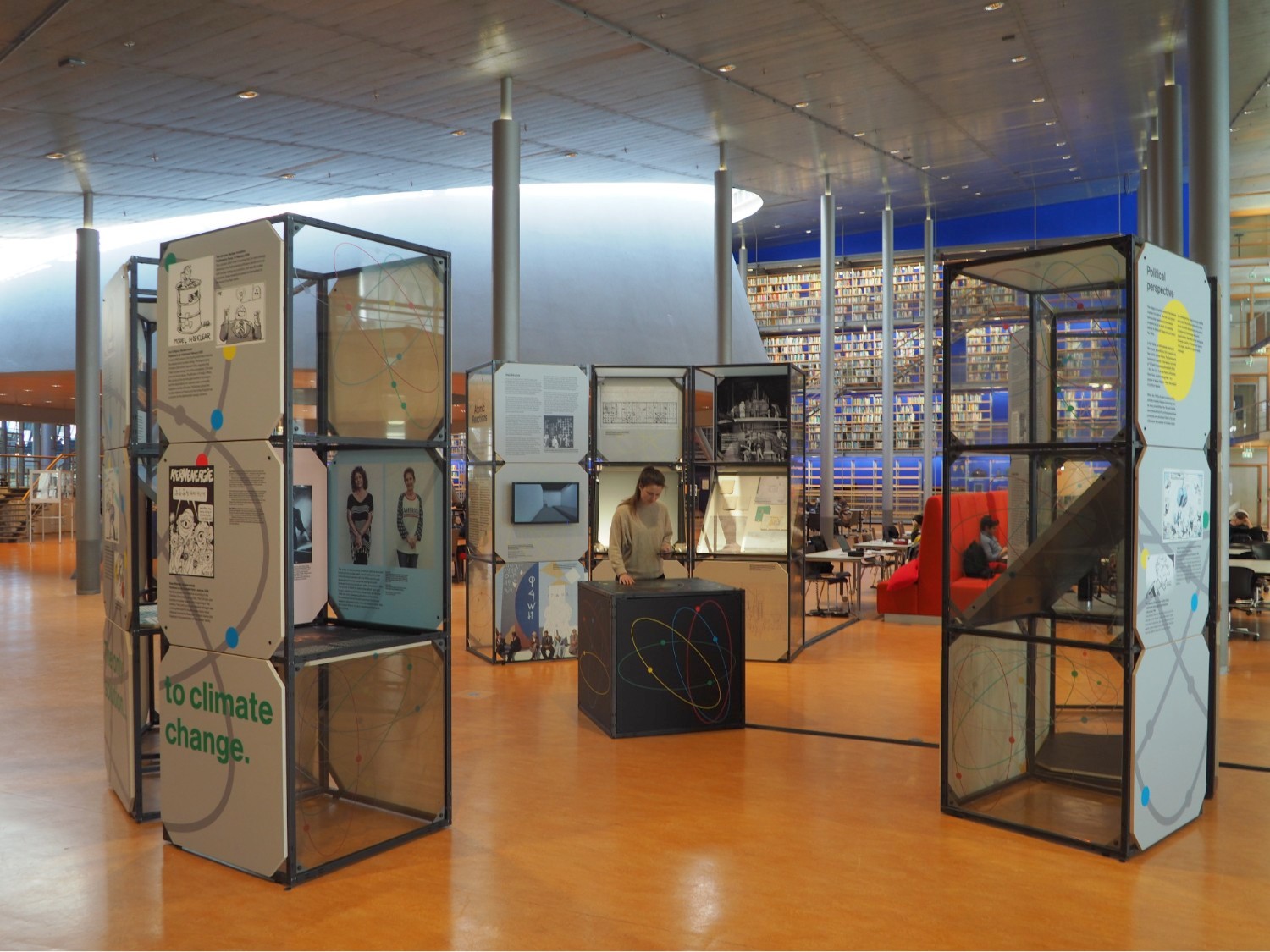In 1957, the recently renovated nuclear reactor of the RID was an example of just-conquered nuclear energy. How do we see the field more than sixty years later?
The Atomic Reactions exhibition in the University Library is part of a programme that looks back on nuclear energy and also looks forward. (Photo: Jos Wassink)
An operating nuclear reactor that you could sit with your back nice and warm against was a spectacular highlight of the 1957 exhibition ‘The Atom’. That summer, 750 thousand people saw the blue light of the Cherenkov radiation in a specially built hall at Schiphol Airport. Afterwards, the small reactor was moved to Delft and was given a second life under the name High Education Reactor (HOR). A few years later, the reactor was upgraded from 10 kilowatts to 2 megawatts.
The origins of the ‘Delft’ nuclear reactor, its recent renovation and the renewed interest in nuclear energy as a CO2-free energy source prompted Studium Generale, Academic Heritage and the TU Delft Library to organise the Atomic Reactions programme – an exhibition and a cultural programme looking back at the eventful history of nuclear energy in the Netherlands.
“The perception of nuclear energy is a messy knot,” says Vincent Cellucci, one of the exhibition’s creators. “Take the division between nuclear energy and nuclear weapons that has always been seen as a red line by researchers. In the recent war in Ukraine, you see that power plants in a battlefield still raise concerns about nuclear safety.”
The exhibition designers have brought order to the chaos by telling the story of ‘The Atom’ exhibition, the Delft reactor HOR and contemporary research on the inside of the three islands.
On the outside, the changing public perception of nuclear power is depicted in the form of newspaper cartoons. “It is nice for international students to learn the politics of Dutch thought about nuclear energy,” says Cellucci – himself an American.
The vicissitudes of Dutch public opinion are also reflected in the exhibition’s subtitle: ‘From untamed optimism to public scepticism and back again’. As soon as an incident occurs, the pendulum swings back in the other direction.

At the heart of the exhibit is a reactor that runs on opinions instead of neutrons. By scanning a QR code and answering questions, you can see to what extent your view on nuclear energy is determined by the four perspectives: ethics, politics, ecology or apocalyptic myths.(Photo: Jos Wassink)
In the coming months, you can take part in a political cartoon workshop (28 April), a crash course in creative non-fiction writing (31 May), and a screening of the impressive documentary ‘Into Eternity’ (2 June) about the construction of a radioactive waste repository that will last twice as long as the history of mankind so far.
- All activities in a row at Atomic Reactions
Do you have a question or comment about this article?
j.w.wassink@tudelft.nl


Comments are closed.